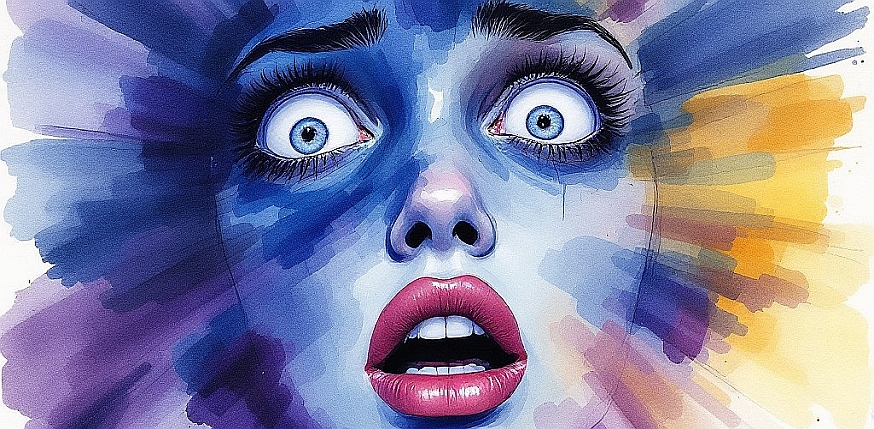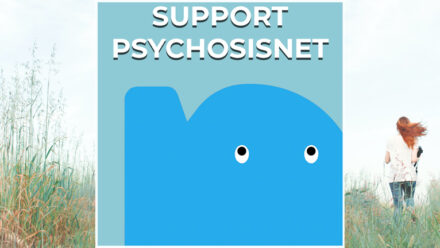
In psychiatry it is often assumed that medication needs to be taken long-term to bring about permanent changes in our neurotransmitters. But what if an important part of the effect of these drugs isn’t in the long term change of the system, but in something much more direct?
The common conception is that medication like antidepressants, antipsychotics, or anxiolytics, restore the balance in serotonergic, dopaminergic, histaminergic, and glutamatergic systems.
The ‘shock’-theory
What if their strength lies in a temporary ‘shock’ that snaps people out of their mental loop for just a moment?
This perspective – the ‘shock’-theory – offers an alternative view on how psychiatric medication operates – and in fact, the whole principal of treating psychological suffering. It argues that mental illnesses like hearing voices, depression, anxiety disorders, addiction, and anorexia, are often characterised by being stuck in a negative mental loop, mediated by the Default Mode Network (DMN). Psychiatric drugs can cause a disruption of this network, a temporary shock that creates an opportunity for change.
What are neurotransmitters and how do they work in the brain?
To properly understand this, here’s a short explanation about neurotransmitters, the chemical messengers in the brain, that make it possible for the nerve cells to communicate with each other.
• Serotonin: often associated with mood and well-being. Many antidepressants affect this system.
• Dopamine: often involved in motivation, reward, and addiction.
• Noradrenaline: plays a part in “fight-or-flight” response, alertness, and attention.
• GABA: the most important inhibitory neurotransmitter, helps with relaxation and anxiety regulation.
• Histamine: affects vigilance and immune response.
• Glutamate: the most important stimulating neurotransmitter, crucial for learning and memory.
• Endocannabinoid system: regulates mood, pain, appetite, and memory through cannabinoid receptors in the brain.
• Opioid system: relieves pain but is highly addictive because of interaction with endorphins and opioid receptors.
Traditionally it has been thought that psychiatric medication operates by modulating these systems long term. But in fact, these medications can also cause an immediate shock-effect, which gives people a sudden, different view on the situation and makes them break out of their vicious cycle.
The negative run of the DMN and the “shock” as breakthrough
The Default Mode Network (DMN) is a network of areas of the brain that’s active when we daydream, think, or fret about ourselves. In many mental health conditions, this network is hyperactive, and this leads to – at least that’s what people think – people getting stuck in patterns of negative thinking.
The ‘shock’-theory states that medication causes a temporary disruption in the DMN, that makes people snap out of their negative loop, and experience room for change. This could possibly be the root of the therapeutic effect. Psychedelic therapies like psilocybin and LSD do this directly, whereas conventional medicine like antidepressants or antipsychotics do this in a more subtle way.
Electroconvulsive therapy and alternative shock-mechanisms
An extreme form of this ‘shock’ is electroconvulsive therapy (ECT). It’s likely that ECT doesn’t work by causing long term, biochemical changes in our brain, but rather by literally shaking the DMN out of its negative loop. This effect is possibly comparable to that of psychedelics, although it works in a very different way,
But what if these ‘shocks’ don’t always have to be pharmacologic or electric? There are countless different ways to cause a disruption in the DMN. A few of these are:
• Music – deep, emotional reactions to this can cause a mental ‘reset’.
• Hypnosis – changes the way in which we process information and can free ourselves from limiting thoughts and beliefs.
• Breath work – breathing techniques like ‘Holotropic Breathwork’ can trigger transformative experiences.
• Sleep deprivation – Staying awake for a short period of time can lead to a mental reset.
• Intensive exercise – People who run the marathon, for example, often experience a mental breakthrough (‘runner’s high’).
The ‘shock’ as explanation for the placebo-effect
Maybe this theory also offers an explanation for the placebo-effect. Placebos don’t just work because people ‘think’ they are making them better, but because they can cause a psychological shock. The powerful therapeutic ritual of the treatment in a strong doctor and patient relationship can bring about a disruption in the DMN that can make people see a new perspective beyond their suffering.
Conclusion: a shift in our thinking about treatment
If this ‘shock’-theory is right, it means we need to start thinking differently about psychological treatments. Maybe medication doesn’t have to be taken long term, but strategically instead, to create a break-though moment. And maybe we should pay more attention to non-chemical ways to disrupt the DMN and get people out of their negative loop.
Psychiatric treatments would not just be about biochemically correcting imbalances, but about facilitating mental liberation. And that opens the door to a much broader range of treatment options – from music and exercise to psychedelics and a deep, human connection.





Comments: